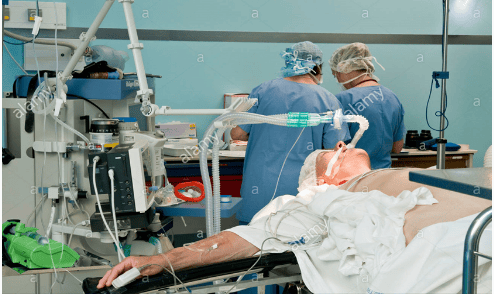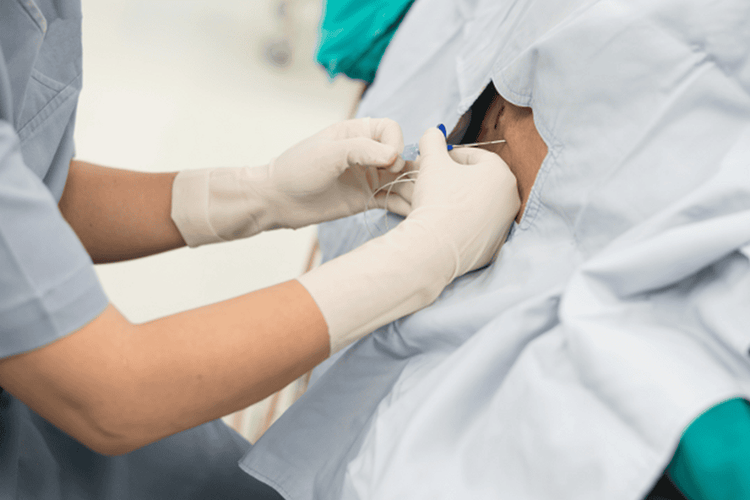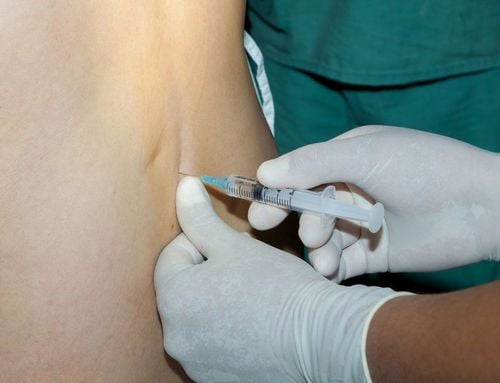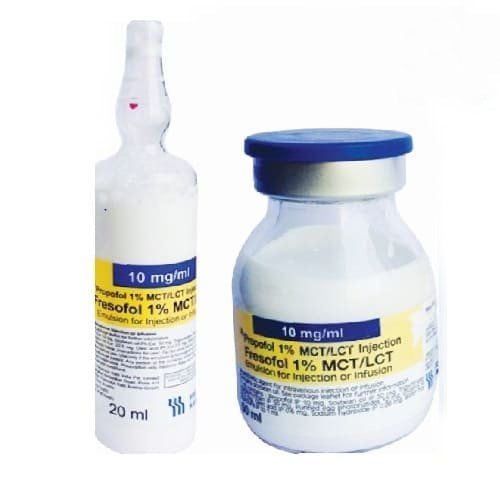This is an automatically translated article.
The article was professionally consulted by Specialist Doctor I Ho Quoc Tuan - Anesthesiologist - General Surgery Department - Vinmec Nha Trang International General Hospital. The doctor has many years of experience in the field of Anesthesia - resuscitation.1. What is anesthesia?
Anesthesia means loss of sensation. This technique helps the patient not feel pain and lose other sensations. The anesthetic drugs block the signals that travel along the nerve to the brain. When the anesthetic wears off, the patient feels back to normal.
The following anesthetic methods are available:
Local anesthesia : Anesthetizes a small part of the body. There are local anesthetics such as drops, ointments, sprays, or injections. Patients with local anesthesia will be awake but not feel pain; Regional Anesthesia: Performed for operations on larger or deeper parts of the body. An anesthetic is injected near the nerve endings that carry signals from this area of the body to the brain. The most commonly used regional anesthetics are spinal and epidural. These 2 types of anesthesia are usually performed during lower body surgery such as cystectomy, cesarean section, or hip replacement. Patients with regional anesthesia are still awake but do not feel pain; General anesthesia: A state of controlled loss of consciousness, during the period of anesthesia the patient no longer feels. This method is used in some surgical cases, can be performed to replace regional anesthesia. Anesthesia is injected through a vein or anesthetic gas inhaled into the lungs is carried by blood to the brain. Drugs and anesthetic gases prevent the brain from receiving messages from nerves inside the body. The patient under general anesthesia lost consciousness. When the anesthetic is removed, the patient's consciousness returns to normal;

Combination of anesthetic methods: Anesthesia drugs and techniques can also be combined; Sedation: The use of small amounts of anesthetic or similar drugs to induce drowsiness. Sedation helps to keep the patient physically and mentally comfortable during examinations or procedures that may cause discomfort or pain (eg, endoscopy). The person may have a slight memory of what happened or no memory at all. If the patient is receiving local anesthesia, additional sedation may also be required. The doctor will review the actual condition and make a decision.
2. What are the changes in the body after anesthesia?
2.1 The patient will not feel pain The purpose of anesthesia is to make the patient feel no pain. Medications that are put into the body block the flow of nerves, blocking pain signals from reaching the brain. Therefore, the patient will not feel the pain until the effect of the drug decreases.
2.2 The patient may lose some or all of his memories During local or regional anesthesia, the patient may still be awake, aware of what is happening around him. Although the patient does not feel pain, the patient can still feel movement when the doctors work in the area where the anesthetic is injected.

When under general anesthesia, the patient will be completely unconscious. When the anesthetic drugs start to work, the patient will feel dizzy like being on a cloud. Within about 1 minute, the person will become unconscious, the muscles will relax, and the patient will need help with breathing and temperature. The body's respiratory system will not work automatically and body temperature may drop. Since you won't be able to remember anything about the procedure, anesthesia can help ease some of your concerns about surgery.
3. How does anesthesia work - side effects
Some side effects may occur when performing anesthesia. These side effects depend on the method of anesthesia. Specifically:
Local anesthetic: When the needle is inserted into the body, the patient may feel discomfort or pain. In rare cases, the anesthetic needle may cause bleeding or minor bruising. A few other patients experienced transient side effects such as headache, paralysis of a part of the body (where the drug was given), muscle weakness; Regional anesthesia: A procedure that can cause nerve damage, weakness, or numbness. Some other side effects are heart or lung problems. In some cases, regional anesthesia can cause infection; General anesthesia: Using a large amount of anesthetic. So it may have more side effects even if they don't last as long. Common side effects include: Drowsiness, nausea and vomiting, memory loss (temporary or long-term), stomach problems and cold sensations, damage to teeth and mouth, difficulty urinating. These side effects may go away on their own after a few hours to a few days. However, if you have unusual symptoms, you should tell your doctor because they can get worse or be a warning sign of serious health complications.

4. Complications of anesthesia
Complications occur depending on the method of anesthesia. Specifically:
Local anesthesia: Pain, ischemia leading to necrosis, infection, nerve damage (due to direct damage during anesthesia), bleeding and hematoma; Regional anesthesia: Pain, headache (caused by cerebrospinal fluid leak following an epidural procedure), hypotension, bradycardia, direct nerve damage, hypothermia, bleeding internal bleeding (or external bleeding), spinal infection, respiratory failure (if multiple anesthetics are injected), aseptic meningitis, spinal cord injury (temporary or permanent), drug toxicity, urinary retention, marrow hematoma, marrow infarction, anaphylaxis; General anesthesia: Anaphylaxis (rash, urticaria, hypotension, bronchospasm, nausea), tooth damage, sore throat, vocal cord injury, dry mouth, respiratory failure, hypotension hypothermia, impaired cardiac function, air embolism, venous (or arterial) thrombosis, hypoxic brain damage, myalgia, poor anesthetic efficacy, pruritus, nerve damage, back pain, urinary retention, drug reactions to certain ingredients or drugs, paralytic ileus, difficulty weaning off ventilators, headache, aspiration, pneumonia, blood clots, malignant hyperthermia, death. After anesthesia, patients need to closely monitor their health, immediately consult a doctor if there are abnormal signs that warn of serious complications.
Vinmec International General Hospital is one of the hospitals that strictly applies safe surgical anesthesia practice standards according to international guidelines. With a team of experienced anesthesiologists and nurses, along with modern equipment such as nerve detectors, ultrasound machines, Karl Storz difficult airway control system, anesthesia monitoring system GE's comprehensive AoA (Adequate of Anesthesia) including monitoring of anesthesia, pain and muscle relaxation will deliver high quality and safety, helping patients to have adequate anesthesia, not awake, no residual relaxant muscle after surgery.
Vinmec Health System is also proud to be the first hospital in Vietnam to sign with the World Anesthesiology Association (WFSA) towards the goal of becoming the safest hospital for surgical anesthesia in Southeast Asia.
Please dial HOTLINE for more information or register for an appointment HERE. Download MyVinmec app to make appointments faster and to manage your bookings easily.














